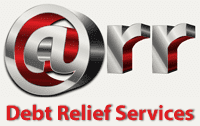One of the biggest (non-pandemic) national news stories at the beginning of 2021 was our household debt. The debt-to-income ratio is a measure of how much debt we carry in relation to our disposable income. In other words, the money you have available after paying things like the mortgage, credit card interest, student loans, alimony, etc.
In 2017, our national debt reached an all-time high of 179%. We almost matched that at the beginning of this year, with 170%. What does that mean? It means that for every $1 of disposable income we have, we owe (on average) $1.70. This article explores three of the most common ways people get into debt, first, let’s look at how to calculate our debt-to-income ratio so you have a better understanding of your financial wellness:
- STEP 1. Add up all your monthly debts, including car loans, rent, child support, minimum credit card payments, etc. NOTE, this does not include groceries, insurance, utilities, healthcare or similar expenses because they’re not considered “debt”.
- STEP 2. Divide the sum of your monthly debt by your gross income (your take-home pay before taxes and other deductions).
- STEP 3. Multiply by 100 to convert it into a percentage.
WHAT’S AN IDEAL DEBT-TO-INCOME RATIO?
When applying for credit or a mortgage, lenders need you to have a percentage smaller than 36%, with no more than 28% of that debt going towards a mortgage or rent. As you can see, there’s a big difference between the current average debt-to-income ratio of 170% and the number lenders require.
CANADA’S LEADING CAUSES OF DEBT
LIVING ON CREDIT: Credit cards are probably the first thing you think of when talking about debt and there’s good reason for that. It’s easy to forget your credit card is not a debit card. The rule of thumb is that you shouldn’t buy something on credit unless you already have the money to pay for it. Unfortunately, credit cards keep becoming more and more tempting with their promises of cashback and other rewards. The reality is that most Canadians carry a balance after the months’ end, and with most interest rates being around 20% the math doesn’t add up in favour for the consumer… which is why the credit card companies keep getting richer, not us.
Living beyond your means, aka “keeping up with the Joneses’” is one of the driving factors to putting so much on credit, even when we know we won’t be able to pay it back anytime soon. Unfortunately starting down this path can be very addictive. It’s also becoming clear that younger generations are attempting to “live their life to the fullest” and live beyond their means, simply to show off on social media.
MISSING REPAYMENTS: It may sound evil, but debt is designed to spiral out of control. This is especially true for credit cards and payday loans. Missing one payment triggers a late fee, increases your debt levels, and affects your credit score, putting you in an even worse situation.
LACK OF FINANCIAL LITERACY: It’s pretty safe to say that most adults here in Windsor Essex weren’t taught any financial education in high school. The government has started to recognize that financial literacy is an important tool for all of us and are now starting to add it to the curriculum. Unfortunately, without this knowledge, many Canadians lack the basic skills to create and stick to a budget, let alone understand how credit scores work and why it’s important to pay down debt.
Fortunately, it’s never too late to lean and improve your financial literacy. Working with a financial wellness coach can help you pay down debt, plan or save for a large purchase and teach you to be financially independent.








Leave A Comment
You must be logged in to post a comment.